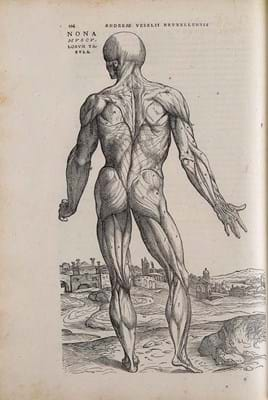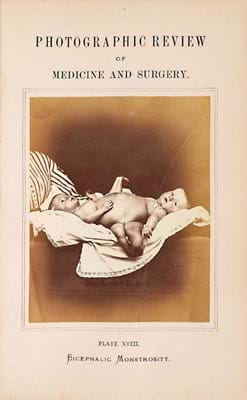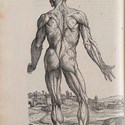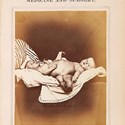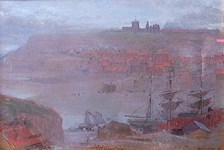Andreas Vesalius’ monumental and ingeniously illustrated study of human anatomy, De humani corporis fabrica, first published in Basel in 1543 when he was just 29, was the crowning glory of a medical and scientific library sold in the US.
Bid to a low-estimate $260,000 (£198,475) at Bonhams New York (27.5/25/20/12.5%) on March 11, this copy of one of the great landmarks in the history of Western medicine was the subject of an excellent introductory article on Vesalius by James Le Fanu, a historian of science and medicine, published in the saleroom’s house magazine (see bonhams.com/magazine/27607).
It was a copy once in the library of one of Vesalius’ close friends, Achilles Pimmin Glasser, a physician and humanist who shared its author’s view that so much could be learned by post-mortem examinations of their patients.
Glasser had paid five florins for his copy just a month after publication, but in 1557 when a second edition appeared, Vesalius gave him a copy. It is today in the Vatican library.
Fye library
The Vesalius was part of the library of W Bruce Fye, a distinguished physician, cardiologist, medical historian and bibliophile who has in the past made very substantial literary bequests to the Mayo Clinic*, where he remains emeritus professor of medicine and its history.
Of the 400 or so lots offered in this sale of Fye’s personal library, overall figures showed a bought-in rate of some 30%, though a section of almost 100 lots focusuing on the famous Johns Hopkins teaching hospital in Baltimore resulted in almost everything sold.
Among other ‘Classics of Medicine’ that made up the first 200 or so lots, around 130 found buyers.
Highlights included a rare 1507 first of Antonio Beniveni’s De abditis…, the first treatise on pathology based on post-mortem examinations, at $8000 (£6105).
A 1665 first issue of Robert Hooke’s account of discoveries made using a newly perfected compound microscope, Micrographia, made $35,000 (£26,720).
The Johns Hopkins lots included a presentation copy of Surgery of the Head, a 1908 extract from the journal Surgery… that marked the printed debut of a pioneering work: Harvey Cushing’s systematic treatise on the technique of neurological surgery.
Inscribed for Dr George Heuer, his first assistant at Johns Hopkins, it made $17,000 (£12,975).
As well as the main catalogue sale, a further 344 Fye lots were offered online in a sale ending March 21. It was led at $20,000 (£15,265) by a group of 121 offprints of papers by Walter Dandy (1886-1946), who succeeded Cushing as the USA’s most prominent neurosurgeon.
Some 50 lots in the main, March 11 sale focused on William Osler, a Canadian physician and one of four founding professors of the Johns Hopkins hospital. An 1892 first issue of his enormously influential Principles and Practice of Medicine made $5500, but a treble-estimate record $19,000 (£14,505) was pid for a copy of the second issue.
It was inscribed by Osler to a Miss Humpton, a Johns Hopkins stenographer who not only typed up the text from her shorthand notes of his dictation but compiled the index.
Sold at $24,000 (£18,320) were two volumes containing all issues of the short-lived Photographic Review of Medicine and Surgery. Containing a total of 48 remarkable, card mounted photographs, this Lippincott of Philadelphia publication of 1871-72 is today a great rarity.
Cardiology focus
The final, 88-lot section of the catalogue focused on cardiology, the collector’s particular field of expertise, and though there was no first of William Harvey’s De motu cordis on offer, a 1643 Paduan, second authorised edition in contemporary limp vellum boards sold well at $17,000 (£12,975).
In a modern but antique style calf binding, a 1649 Cambridge first of Exercitatio anatomica de circulatione sanguinis sold at $12,000 (£9160). Also published in that year in Rotterdam, this is an exceptionally rare work in which Harvey describes the circulation of blood through the coronary arteries and records further experiments in support of his theories.
On its fifth saleroom appearance in around 60 years, sold at $25,000 (£19,085) was a brief letter of 1639-40 in which Harvey, in his capacity of physician in ordinary to Charles I, refers to medicines dispensed to members of the royal household.
* Founded in 1889, the Mayo Centre is a non-profit-making academic medical clinic in Rochester, Minnesota, employing some 4500 physicians and scientists.


